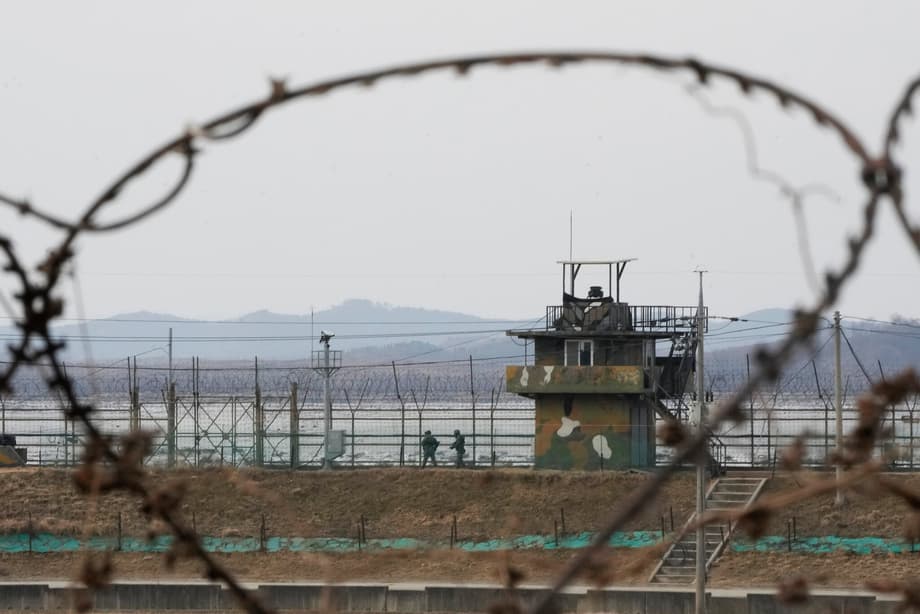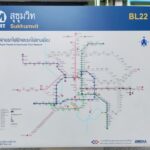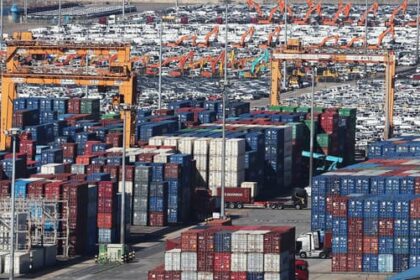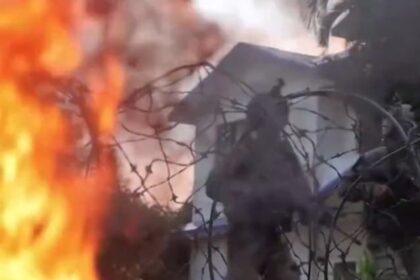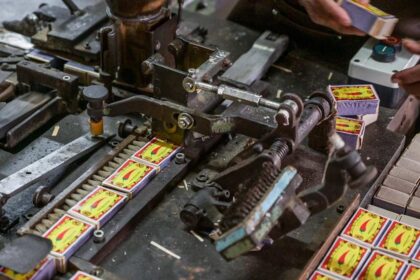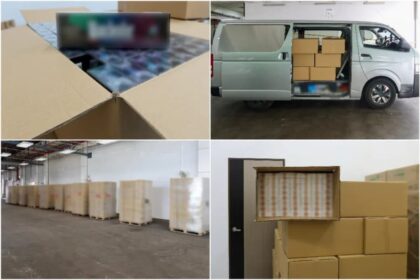A rare escape across the DMZ
On Sunday, a North Korean soldier crossed the Military Demarcation Line in the central sector of the Demilitarized Zone and surrendered to South Korean forces. South Korea’s Joint Chiefs of Staff said troops detected the individual inside the buffer area, tracked his movement, and secured custody once he reached the southern side. The soldier told South Korean personnel that he wished to resettle in the South.
- A rare escape across the DMZ
- How can anyone cross a border this fortified
- Who defects and how they usually reach the South
- What happens next for the soldier
- A sensitive moment in inter Korean relations
- Past high risk crossings
- What this crossing could mean for military planning
- Legal and humanitarian considerations
- Recent pattern of crossings
- Key Points
Authorities are now questioning the soldier to confirm identity, military unit, route, and motives for the crossing. The military said an investigation is underway and relevant agencies will handle the case in line with protocol. No unusual activity by North Korean border units has been detected since the incident, according to the Joint Chiefs of Staff.
The defector’s path is extremely rare. It is the first reported case of a North Korean soldier reaching the South across the land border since August 2024. The DMZ is a 248 kilometer long and 4 kilometer wide buffer created after the 1950 to 1953 Korean War armistice. The area is layered with land mines, tank traps, dense fencing, and armed guards on both sides. North Korean units have fired on fleeing soldiers during past escapes. In 2017, a North Korean soldier was hit multiple times when his comrades fired about 40 rounds as he sprinted toward the South. South Korean troops pulled him to safety and doctors saved his life.
Most North Koreans who reach South Korea travel through China, not across the DMZ. Since the end of the Korean War, about 34,000 people from the North have resettled in the South. Travel across the inter Korean border is rare because the ground is mined, movement is watched by cameras and sensors, and troops respond quickly to any sign of a breach.
What South Korea says happened
Military officials said the soldier was first detected in the central portion of the buffer zone near the line that divides the peninsula. Surveillance teams watched his movements before front line troops conducted what they described as a standard guiding operation, a drill designed to secure an intruder safely while maintaining control of the area. The soldier crossed south of the line and was taken into custody without incident.
How can anyone cross a border this fortified
Despite barbed wire, watchtowers, and layers of mines, the DMZ has stretches of thick vegetation and rugged terrain. Both militaries use thermal cameras, radars, and tripwire sensors, yet conditions like heavy rain, fog, or darkness can create gaps. People who live or serve near the frontier often know footpaths and seasonal water levels that may make a crossing marginally less deadly. A soldier familiar with patrol cycles and blind spots would have an advantage that a civilian does not.
Analysts in Seoul say this latest defection was likely aided by intimate knowledge of the local terrain and defenses. A defector in uniform can sometimes read the rhythm of guard rotations or identify areas where flood season, erosion, or vegetation growth has shifted minefields or reduced visibility. That knowledge can buy minutes, and minutes matter in the DMZ. Hong Min, a senior analyst at the Korea Institute for National Unification, says soldiers can navigate dangerous stretches because they know the ground, and that Pyongyang will view the case as a security setback because the soldier could share details about troop movements.
Even with experience, a crossing is a gamble. The zone is laced with mines, and units on both sides are trained to respond to any movement around the Military Demarcation Line. South Korean patrols and sensors often detect intrusions long before a person reaches the line, which is why many crossings end with an escort rather than a chase. That does not remove the danger. The 2017 case showed how a sprint across open ground can draw fire from the North within seconds.
Who defects and how they usually reach the South
Paths to the South typically run through China. North Koreans cross the Yalu River to the west or the Tumen River to the east, then move through a third country before reaching South Korea. The route is long and risky. Chinese authorities often detain North Koreans and send them back. People who do make it out tend to rely on brokers and church networks, and they travel in small groups to avoid detection.
The numbers show the pattern. About 34,000 North Koreans have arrived in the South since the armistice. Last year, 236 people from the North reached South Korea. Women made up about 88 percent of those arrivals, a trend that has held in many recent years because women often find seasonal work in China and are more likely to be able to move without immediate notice. Only a handful of people, three in total last year according to officials, made it across the inter Korean border rather than through a third country.
Direct crossings inside the DMZ remain rare because they are lethal if anything goes wrong. Mines can shift with rain and freezing temperatures. Small streams may look shallow but have hidden obstacles. Patrols leave few gaps. Civilians sometimes spend daylight hours motionless under cover and move only at night. Even then, many are spotted by thermal cameras or ground sensors.
What happens next for the soldier
After an initial medical check and security sweep, defectors are interviewed by the military and intelligence services. The goal is to confirm identity, map out the route of escape, and rule out penetration by an agent. Soldiers from the North often undergo longer questioning because they may know sensitive details about border units, communications, or standard orders. Investigators will ask about unit location, command structure, and logistics.
Once the security screening is complete, most North Koreans who choose to stay enter a program run by South Korean authorities that includes education and resettlement support. A resettlement center known as Hanawon provides classes on everything from banking and housing to health care and digital skills. People then move into local communities and receive support for job placement. Those who served in the North Korean military may also receive counseling tailored to the stress of leaving a rigid command environment.
The soldier in this case will likely be of interest to military planners because he served along the central sector of the border. Information about patrol routes, equipment, and morale inside units near the line can help the South refine its defense plans. It can also be used to evaluate propaganda themes aimed at troops across the border.
A sensitive moment in inter Korean relations
The defection comes during a period of deep mistrust. South Korea’s President Lee Jae Myung took office in June and promised to pursue dialogue and humanitarian engagement. The North has not responded to his outreach. Ties remain frozen. Propaganda balloons, artillery drills near the border, and periodic missile launches have defined the public mood, while official channels have stayed silent.
Incidents at the border carry symbolic weight. A soldier who chooses the South can be used by Seoul to argue that life in the North is harsh and that allegiance to the regime is brittle. Pyongyang usually pushes back with denunciations and warns that such escapes are staged or coerced. State media in the North often accuse defectors of being criminals or liars. That rhetoric can be followed by displays of military readiness along the frontier, although South Korean officers say they have seen no unusual movements since this latest crossing.
Past high risk crossings
The DMZ has seen a handful of dramatic escapes that show how unpredictable the buffer can be. In 2017, a North Korean soldier drove to the border, fled on foot when his vehicle got stuck in a ditch, and endured a hail of gunfire before collapsing across the line. South Korean medics performed emergency surgery, and the case became a vivid example of the personal risk that a person takes to cross.
Last year brought new reminders of both danger and restraint. In August 2024, a North Korean staff sergeant slipped across the eastern section of the border and surrendered to South Korean forces. In a separate case this July, a North Korean civilian managed to reach the South after a long approach through the DMZ. The operation showed how careful and slow a crossing can be when there is no shooting.
South Korea’s Joint Chiefs of Staff later described a brief exchange from that night, when the civilian, startled by nearby troops, spoke first and the soldiers replied. The quotes are a glimpse of how these encounters unfold under pressure and in darkness.
A North Korean man asked, "Who are you?" The South Korean soldiers answered, "We are the South Korean military. We will guide you to safety."
The July operation lasted about 20 hours. Troops tracked the man’s movement with surveillance systems, waited for night to reduce the risk of detection from the northern side, and then escorted him across the line. The case does not match every situation, but it offers insight into how South Korea tries to manage a crossing without triggering an exchange of fire.
What this crossing could mean for military planning
Every military defector brings information that can sharpen planning on the other side. A soldier knows the condition of border fences and trenches, the types of night vision gear deployed at a post, and the tempo of patrols around the line. He can explain whether fuel or food shortages have cut training hours, how often radios fail, and whether commanders have rotated units in response to recent incidents.
That knowledge matters for a simple reason. The DMZ is a narrow place where decisions must be made quickly. If border units in the North are short on spare parts or if new recruits are guarding key sections, that can change how the South allocates its own patrols. It can also guide where to place new cameras and how to rehearse warning drills. Information about morale is harder to quantify, yet it can be one of the most valuable things a defector brings.
Legal and humanitarian considerations
South Korea treats people from the North as citizens under its constitution. Even so, there is a careful legal process. Investigators screen arrivals to prevent espionage and to identify victims of trafficking. People who wish to go elsewhere can ask for help to travel to a third country. Those who remain receive housing assistance, a basic stipend for a time, and access to education and health care. Civil society groups support families who have been split by the border and help defectors find jobs.
Life after resettlement can be difficult. Many arrivals carry trauma from years of surveillance and shortage. Others struggle with stigma or with fast moving technology and work culture in the South. The government has expanded counseling and job training programs to address those issues. Churches, alumni networks, and employers now provide mentorship and apprenticeships designed to build confidence and stability.
Recent pattern of crossings
Since President Lee Jae Myung took office in June, three people from the North have reached the South across the DMZ. Two were civilians in July. The current case is the first soldier of his tenure. The pace is still low compared with the years before the pandemic, when hundreds of North Koreans arrived each year through China. Tight border controls during the pandemic and renewed Chinese crackdowns reduced movement for a time, and numbers have not fully recovered.
For now, officials say the front remains quiet. No unusual movements by North Korean forces have been observed near the central sector where the soldier crossed. That restraint reduces the risk of a sudden confrontation along the line while the South completes its questioning and medical checks.
Key Points
- North Korean soldier crossed the central sector of the DMZ on Sunday and surrendered to South Korean troops
- South Korea’s military says the soldier seeks resettlement and is under investigation
- First soldier defection across the land border since August 2024, and the first under President Lee Jae Myung
- DMZ crossings are rare because the border is mined, fenced, and heavily guarded
- About 34,000 North Koreans have resettled in the South since the armistice, most via China
- No unusual North Korean military activity has been observed since the crossing
- The soldier may provide details about border units, patrols, and morale


